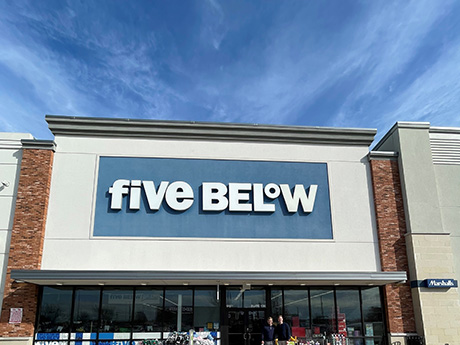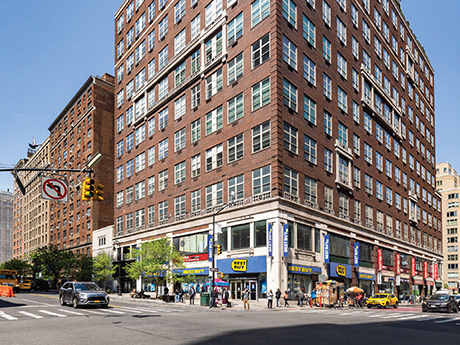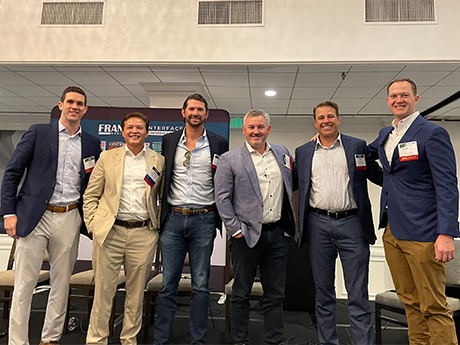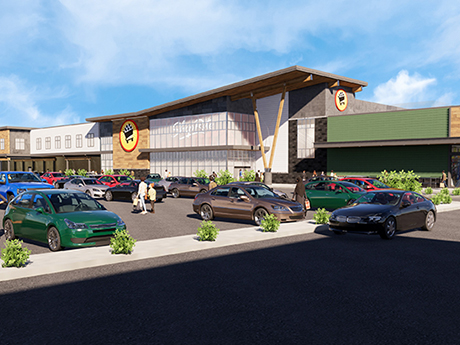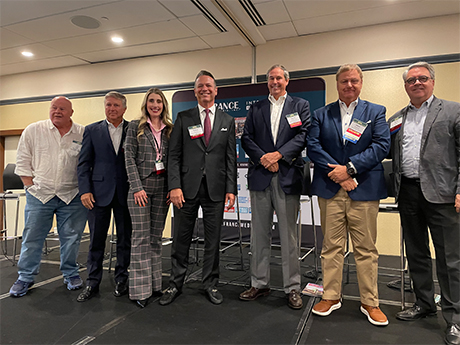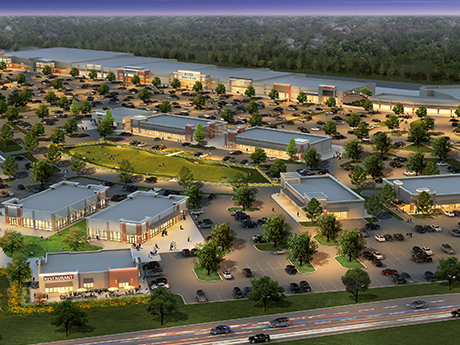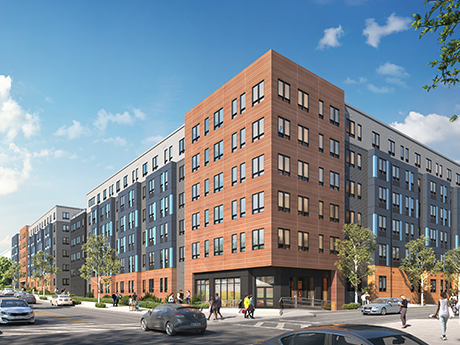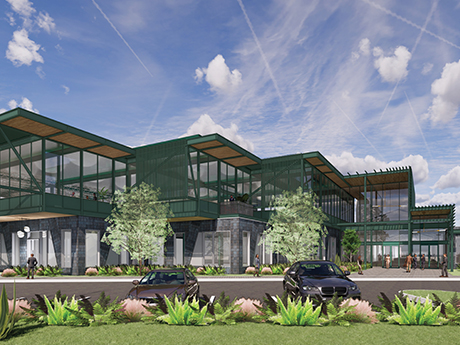By J. Wickam Zimmerman, CEO, Outside The Lines Inc. The use of artificial intelligence (AI) technology is growing in retail commerce, where it’s already helping businesses track inventory, forecast demand and suggest new products to consumers. But how does AI figure into retail real estate? Can it be used to enhance engagement and drive success at the properties themselves? Could it help entice shoppers to step away from their online shopping carts and venture out into the real world? The answer is a resounding yes, and we’re already seeing this play out in the Lone Star State. Creating Spaces That Attract & Retain With major Texas markets like Dallas-Fort Worth and San Antonio seeing record-high retail occupancy rates, many property owners are focused on capitalizing on this momentum. To keep foot traffic high and remain competitive with other local developments and online shopping, it’s more important than ever to create unique draws to centers. A key strategy involves creative placemaking and offering experiential destinations that are increasingly bolstered by technology, including AI. To stay ahead, retail centers today must offer an experience that can’t be replicated virtually. This requires having dynamic, interactive onsite features and leveraging technologies that are just …
Retail
By Ryan Johnson and Tyler Grisham, managing partners and market leaders, SRS Real Estate Partners Those who live and work in Dallas-Fort Worth (DFW) should be grateful for the metroplex’s strong fundamentals. There are a lot of macro-level factors that are out of whack and hurting the commercial real estate business, but there are also a lot of macro factors working in favor of DFW that not many major markets in the United States can claim. Thinking glass half-full, DFW has enjoyed exceptional growth in employment, housing and population over the last decade. According to the U.S. Census Bureau, DFW now boasts nearly 8 million residents, which makes it the nation’s fourth-largest metropolitan area. According to the Dallas Regional Chamber, 14 major companies relocated to North Texas in 2023 — Kelly Moore Paint Co., Inbenta, McAfee Corp., Frontier Communications and West Shore Homes, among others. Thinking glass half-empty, DFW has sky-high construction costs, the highest interest rates in recent memory, highest exit cap rates/lowest valuations in recent memory and just a general market mentality that causes developers, banks and investors to exercise great caution. Active Segments, Trends Given these challenges, it may be surprising that there are retailers that are …
By Taylor Williams Across Manhattan’s major retail corridors and pockets, leasing agents, operators and owners are all gaining greater clarity on what levels of rent various submarkets can bear and, by extension, how much spaces are truly worth. After three years of disruptions of the public health and financial variety — each devastating in its own right — a reset of sorts is a major windfall for the country’s largest and arguably most dynamic retail market. Closing deals is challenging enough when all parties are on the same page and the economy is stable. When markets are going through tumultuous phases of discovery in which perceived valuations of spaces fluctuate wildly, negotiations tend to flame out even more quickly — if they even get going at all. “A year ago in Manhattan, you could have two adjacent stores, and one might have been asking for $120 per square foot while the other wanted $220 per square foot,” says Chase Welles, partner at TSCG, an Atlanta-based brokerage and consulting firm that is active in New York City. “There’s certainly more definition relative to last year, and the range of asking rents in each submarket has narrowed.” “The market has become more …
By Taylor Williams Retail owners are facing critical questions about whether to sell or hold their properties in the current environment, which is still defined by uncertainty about whether interest rate hikes have truly peaked and investment sales prices have actually bottomed out. Investment sales decisions frequently hinge on analysis of cap rates, defined as a property’s net operating income divided by its sales price. Generally speaking, higher cap rates indicate lower sales prices and are therefore sought by buyers, whereas lower cap rates reflect higher prices and are preferred by sellers. Cap rates are fluid and tend to move linearly with interest rates. Thus, the Federal Reserve’s campaign of 11 interest rate hikes totaling 500 basis points over the last 20 months has caused cap rates in all asset classes to rise, or as industry folks say, to decompress. The extent to which this cap rate movement influences an investor’s sell-or-hold dilemma varies from deal to deal, but the common denominator is that it complicates all such decisions. At the inaugural InterFace Houston Retail conference, a panel of capital markets professionals delved into the numerical analysis and anecdotal evidence that investment sales brokers are relying on to guide clients …
By Taylor Williams No matter your size, market and scope of operation, for retail owners and operators, there is no such thing as total immunity from the likes of e-commerce, COVID-19, inflation and interest rate hikes. But there is such a thing as absorbing those socioeconomic hits in stride, learning and evolving from them and re-emerging on significantly more solid ground. And that is largely the path that the Philadelphia retail market has traversed over the past few years. The timing of the pandemic dismantled the launch of Fashion District, the redevelopment of the former Gallery at Market East Mall that should have ushered in a new scene of experience-based, locally merchandised retail in Philadelphia. Retailers and restaurants along Center City District’s main shopping corridors quickly devised solutions to the global healthcare crisis and were returning to normalcy when bad timing once again intervened. This time, it took the form of the Delta variant, which delayed plans to reopen existing stores or launch new ones and erased some of the positive momentum that landlords and tenants had recouped. For their part, suburban retail properties, many of whose performances were bolstered in the short run by pandemic- driven population influxes, are …
By Taylor Williams Brick-and-mortar retail has quietly, yet emphatically resurrected itself from the e-commerce- and COVID-induced death knell, bolstered by multiple years of low supply growth that have put a premium on quality space and allowed landlords to zero in on what truly constitutes a winning concept. This notion is inherently subjective and difficult to quantify. But in Dallas-Fort Worth, retail owners and operators say that authenticity — as defined by uniqueness of the offerings and adherence to and reflection of local culture — is paramount to success. From the presentation and packaging of products and services to utilization of local architectural styles to creating a certain shopping or dining ambiance, the ability to capture the authenticity of the market is crucial. Consumers and landlords can afford to be choosy, and they won’t waste time at stores, restaurants or entertainment venues that feel cookie-cutter, phony or out-of-place. But retail landlords can ill-afford to do deals with tenants that simply look the part but lack the financial ability to pay rents, which are growing in urban locations where availability of space remains tight. Monetary due diligence remains critical, but as often as not, there is considerable overlap between the financial solvency …
By Herb Weitzman, executive chairman, Weitzman The major Texas metro areas of Austin, Dallas-Fort Worth, Houston and San Antonio all share one thing in common: Their retail markets are posting balances of supply and demand that outpace every other major commercial real estate category. This milestone was not achieved without overcoming significant obstacles. The major Texas retail markets have survived decades of back-to-back challenges, including major market disruptors like e-commerce, the 2008 Financial Crisis that knocked out several major chains and 2020’s pandemic-induced shutdowns. Each of these significant disruptions and challenges first resulted in store closings and higher vacancy rates. But retail operators as well as commercial brokers and landlords all learned from the setbacks by embracing the lessons of these disruptions to understand how to creatively bounce back stronger. As a result of the market’s careful pivoting, the retail markets in Texas’ major metros have right-sized and are reporting a yearslong trend of balance in supply and demand. To illustrate this point, we used the mid-year reports from CoStar Group on the non-retail CRE types. We compared retail vacancy rates in the four Texas markets to CoStar’s mid-year rates for the industrial, office and multifamily spaces in each of …
By Taylor Williams For the past several years, including during the height of the pandemic, the Boston retail market has performed well, if unspectacularly. Defined and driven by stable fundamentals in terms of job growth and tenant demand, the state capital’s retail sector has proven itself a reliable environment in which to expand store counts and park long-term money. But few, if any commercial markets and asset classes are wholly immune to the effects of sluggish and disruptive macroeconomic activity. Through no fault of its own, the Boston retail market is seeing its paces of growth slow across the key verticals that are development, leasing and investment sales. That said, seasoned players in this space know better than to panic. Boston remains a dynamic market, despite data from the U.S. Census Bureau showing that the city’s total population shrunk by about 25,000 people, or 3.7 percent, between April 2020 and April 2022. In addition, even in an inflationary economy, Boston consumers tend to retain healthy disposable income levels. A burgeoning life sciences sector that is bringing thousands of well-paying jobs to the city and a steady flow of students and young professionals across its 25-plus colleges and universities lie at …
By Ed Coury, senior managing director, RCS Real Estate Advisors Open-air lifestyle centers can be defined as intentionally designed spaces that are set against beautiful landscapes and house high-quality dining, retail, entertainment, health and wellness uses. These centers are being developed or redeveloped at an increasing rate across the country. Lifestyle centers are particularly popular along “smile” states: California, Arizona, Texas, Georgia, Tennessee, Florida, South Carolina and North Carolina. This particular transformation has been a result of “de-mallification” in the suburbs, in which malls that were once largely indoors and anchored by big department stores are now being converted into mixed-use lifestyle developments. For background, lifestyle centers are not a new phenomenon; they have been gaining popularity since the early 2000s. While few new malls have been built in the last two decades, new lifestyle centers and conversions to lifestyle centers continue to emerge every year. So why are these lifestyle centers so popular, and what does the future of suburban retail look like? Shifting Tastes For one thing, consumer preferences have changed. Today, there is high demand for wellness. In a 2022 consumer report by IT consulting firm Accenture, 80 percent of people surveyed stated that wellness was an …
By Taylor Williams North Texas is attracting new and existing entertainment concepts at a frenetic pace as operators of these facilities seek to position themselves squarely in pathways of major growth and capitalize on any remaining pent-up demand from the pandemic. According to a 2022 report from the North Central Texas Council of Governments, the region’s population surpassed 8 million last year. In addition, more than 20 cities in North Texas — the area that includes and surrounds the Dallas-Fort Worth (DFW) metroplex — saw their populations swell by 10 percent or more on a year-over-year basis between mid-2021 and mid-2022. This growth inevitably encompasses key demographics that entertainment operators covet, including families with children and young working professionals. High-paying jobs continue to flow into DFW in the form of corporate relocations and consolidations. Developer KDC recently began construction on Wells Fargo’s 850,000-square-foot regional campus in Irving. New pieces of the PGA of America’s headquarters campus in Frisco are coming on line every quarter and sparking feverish development in surrounding neighborhoods. Global engineering consultant AECOM and construction machinery manufacturer Caterpillar are also in the process of relocating their headquarters from Los Angeles to Dallas, among others. Checking the two boxes …
Newer Posts



